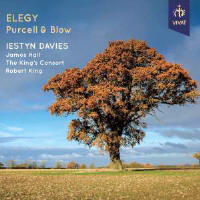Texte paru dans: / Appeared in:
Vivat |
|
|
Reviewer: Raymond
Tuttle
A sharp-eyed reader might
prove me wrong, but I think that this is the first time that Francisco de
Peñalosa’s Lamentationes and the three Mass movements have been recorded.
(The other movements are extant, if I am reading Ivan Moody’s booklet note
correctly, although they have not been recorded here.) In any case, if you
do not know them, these works are a real find—assuming you appreciate
polyphony from the Spanish Renaissance, that is.
Peñalosa and Pedro de Escobar
preceded the more famous Tomás Luis de Victoria by some 75 years. Francisco
Guerrero preceded him as well, but by just one generation. Victoria’s music
has received much attention in recent years—the 10-CD set of his sacred
works, recorded for DG Archiv by Ensemble Noone, is a must-have. These older
composers have not been so fortunate, but I hope that releases such as this
one will stimulate new and amply-deserved interest in these composers and in
their music.
Peñalosa’s Lamentationes and
Mass movements, and Escobar’s Stabat mater dolorosa come from manuscripts in
the Tarazona Cathedral, located in Spain’s Zaragoza province. As Peñalosa
was associated with the Court of Aragon, finding his music in modern-day
Zaragoza is not overly surprising. Less appears to be known about Escobar,
who for many years was confused with the Portuguese composer Pedro de Porto.
(In fact, Wikipedia still conflates the two.) Guerrero was associated with
Seville, and was employed by Emperor Maximilian II.
New York Polyphony’s singing
seems beyond excellent, but just to be sure, I found a recording of Unica
est columba mea by Ensemble Absalon. There’s really no comparison: New York
Polyphony is far superior in every way: steadiness of pitch, blend, balance,
and sensitivity. These performances seem to glow with an inner light. I
don’t see how they could be improved upon. There are four singers in New York Polyphony (although the richness of their sound often suggests a larger ensemble). They are countertenor Geoffrey Williams, tenor Steven Caldicott Wilson, baritone Christopher Dylan Herbert, and bass Craig Phillips. This program was recorded down I-95 in Princeton, New Jersey—specifically, at the Princeton Abbey, a non-sectarian venue that complements these performances. One might say that the Abbey is New York Polyphony’s fifth voice. This gorgeous disc should please scholars and more casual listeners alike. | |
|
|
|
|
|
|
|
Cliquez l'un ou l'autre
bouton pour découvrir bien d'autres critiques de CD |
|




